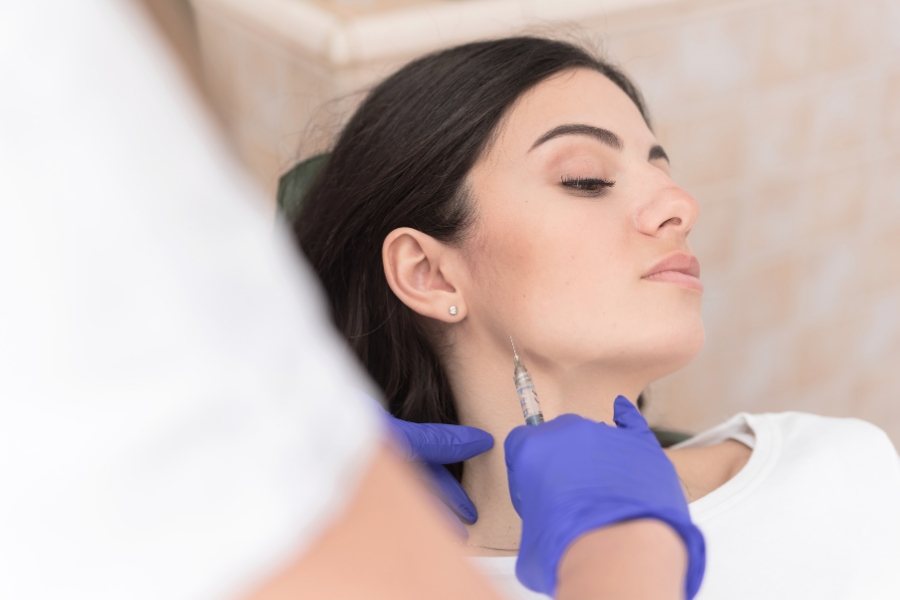Botox for TMJ Pain
Written by Emily RockwellAs a skin care professional, top injector, and the founder of Emily Rockwell Skin Clinic, it often comes as a surprise to most individuals that I’ve experienced firsthand facial pain. My facial pain journey started over 10 years ago when I began suffering from headaches and temporomandibular joint disorder (TMJ) pain. TMJ is a condition that affects the hinge-like joint that connects the skull to the jaw, causing pain and discomfort to the jawline area. TMJ can be caused by teeth grinding and clenching, stress to the jaw, and misalignment of the teeth and jaw. This can create inflammation, stiffness in the jaw, limited mobility, and tension headaches.
PERSONAL PRACTICE
After many years of discomfort and pain, I realized the traditional treatment methods –physical therapy, medications, massage, dental appliances, and steroid injections – just weren’t cutting it. My father, a periodontist and implantologist, and I worked together to research alternative pain relief options and discovered Botox. We attended a Botox course, and I realized that the way Botox targeted the masseter muscles could be the solution to my problem. The masseter muscles on both sides of the face connect the mandible and temporal bone, which are responsible for chewing and jaw movement. The masseter muscles are the main source of discomfort for most people; I see this most often with my clients. The contraction of these muscles during chewing, opening, or closing the mouth can create tension, radiating pain through the jaw up to the temples and neck causing tension headaches. Botox acts as a muscle relaxant for these areas, relieving jaw tension, preventing grinding and clenching, and alleviating headaches caused by TMJ.
A few weeks after my first Botox injection, I noticed a significant decrease in jaw pain and headaches. My own experience with Botox led me to open my clinic to offer this incredible alternative pain treatment to others struggling with facial pain.
PROFESSIONAL PRACTICE
After a thorough consultation, I palpate the muscles to determine pain level to prepare the precise amount of Botox, which varies for each client. Then, I inject Botox into the trigger point in the muscles for immediate pain relief and long-lasting effects. While the needle itself can provide initial relief, it can take two to four weeks for best results.
Some clients may experience minor pain or bruising at the injection site. There is no downtime, and clients can return to their normal activities immediately; however, I do recommend remaining upright for a few hours to avoid the Botox spreading to other areas. Generally, clients will need to get Botox treatments every three to four months for maintenance. I like to follow up with my clients after a month to reassess their pain and to see if they need additional Botox, which is not uncommon with strong masseter muscles.
